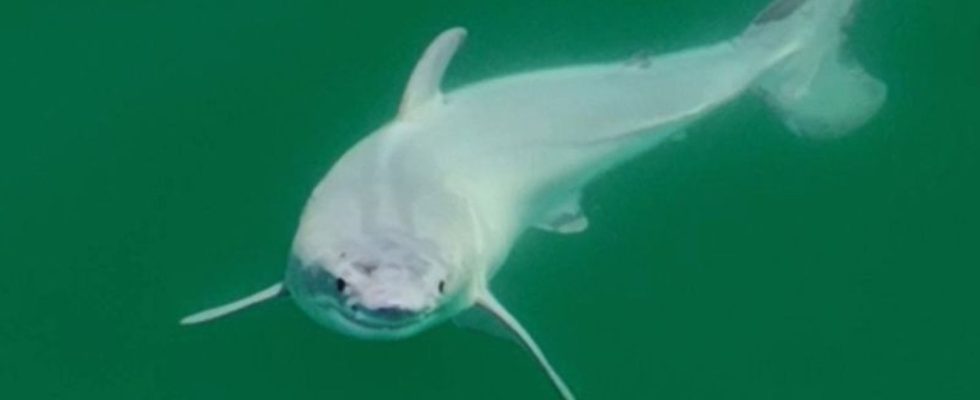Animals
Photo probably shows newborn great white shark
An apparently newborn great white shark off the coast of California near Santa Barbara. photo
© Carlos Gauna/The Malibu Artist/dpa
A documentary filmmaker and a biologist say they discover a great white shark off the coast of California. There are many indications that it is a newborn.
A photographer says he has a unique shot of what is believed to be a newly born great white shark off the coast California made.
The recording shows the shark stripping a white film from its body, report nature filmmaker Carlos Gauna and biology doctoral student Phillip Sternes from the University of California at Riverside in the journal “Environmental Biology of Fishes”. This film could indicate a newborn animal whose body still has substances from the embryonic stage stuck to it. The reason could also be a previously unknown skin disease.
The shark was filmed by a drone camera in July 2023 in the waters off Southern California, the authors write. It was around 1.5 meters long and completely white. Adults, on the other hand, are gray above and white below. Upon closer inspection of the photos and video, it could be seen that a white layer was stripped off the body as the shark swam. “I believe it was a newborn great white shark that shed its embryonic layer,” says Sternes.
It is also possible that the white layer comes from a skin disease, the team writes. However, the shark’s size and appearance suggested it was a newborn. In addition, the recording comes from both an area and a time of year in which the birth of young sharks is assumed.
“The article is quite serious,” says Timo Moritz from the German Maritime Museum in Stralsund. “Regardless of the seriousness, one must of course be careful with conclusions, because this is only an isolated observation.” The team of authors favors the hypothesis with the newborn. However, the study does not address whether there is evidence of such layers in newborns in other shark species. “As far as I know, that’s not the case and that of course weakens this hypothesis.” He himself does not want to emphasize any of the hypotheses as more likely.
According to the authors, skin disease is possible but unlikely
The photographer Gauna reports that he probably spotted pregnant sharks at the location. “I had filmed three very large sharks at this particular location in the previous days that appeared pregnant. That day one of them dived, and not long after this completely white shark appeared.” The wildlife filmmaker has spent thousands of hours filming sharks around the world.
According to the authors, skin diseases do occur in sharks, but only rarely. The fact that the skin beneath the detached layer was normally pigmented speaks against albinism. Diseases such as dermatitis have also been proven in sharks, but the conditions are not similar to what was observed. According to the duo, if the white layer is not embryonic substances, the only possibility would be a previously unknown skin disease.
Already in 2019, another team reported six newborn white sharks that were caught with nets off the Pacific coast of Mexico between 2015 and 2017. The animals, which were 1.1 to 1.5 meters long, were released again after data collection.

